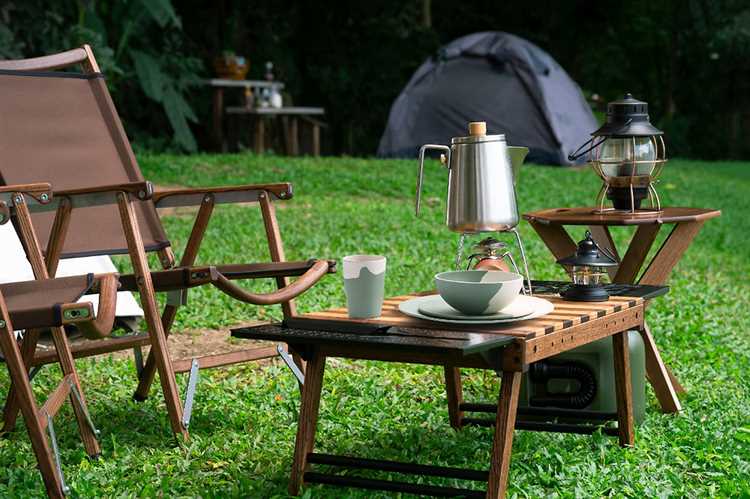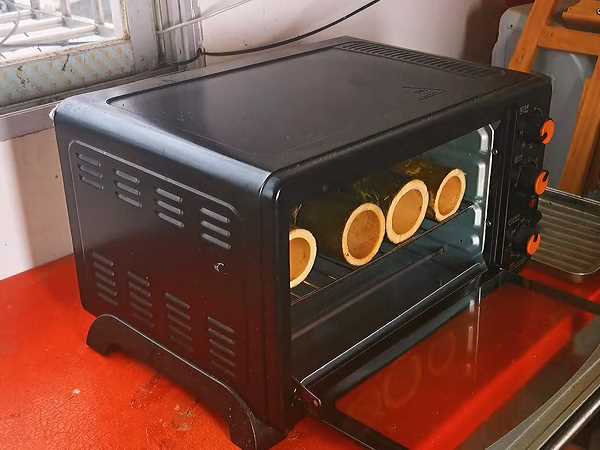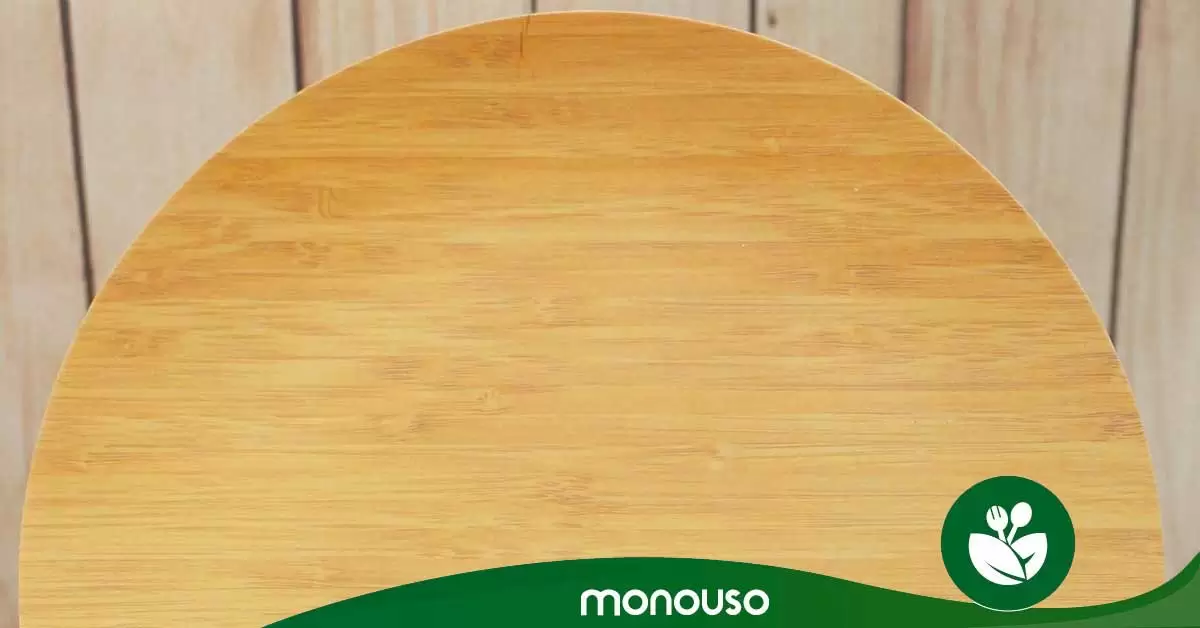
Bamboo is a versatile and sustainable material that is used in a variety of applications, including furniture, flooring, and kitchenware. However, when it comes to microwaving bamboo, it is best to avoid doing so. While bamboo is known for its durability and strength, it is not suitable for use in the microwave.
Microwaving bamboo can lead to damaging consequences. The structure of bamboo consists of long fibers that make it sturdy and resistant to breakage. However, when exposed to high temperatures, such as those found in a microwave, these fibers can weaken and break down. This can result in the bamboo cracking, splintering, or even catching fire.
Another reason why you shouldn’t microwave bamboo is the potential release of harmful chemicals. Bamboo products are often treated and finished with different coatings or chemicals to enhance their appearance and durability. When heated in the microwave, these chemicals can leach out and contaminate your food. This can pose health risks, especially if consumed over an extended period.
In conclusion, it is important to avoid microwaving bamboo due to its tendency to weaken, break, and potentially release harmful chemicals. It is always best to follow the manufacturer’s instructions and avoid using bamboo products in the microwave. Consider alternative materials that are microwave-safe to ensure both the longevity of your bamboo items and the safety of your food.
- Bamboo and Microwaves: A Potentially Dangerous Combination
- The Risk of Fire
- The Release of Harmful Chemicals
- Why Microwaving Bamboo Can Release Harmful Chemicals
- Alternatives to Microwaving Bamboo
- Potential Damage to the Microwave
- Potential consequences of microwaving bamboo include:
- Alternative Methods for Heating Bamboo
- 1. Steaming
- 2. Boiling
- Q&A:
- Is it safe to microwave bamboo?
- What will happen if I put bamboo in the microwave?
- Why should I avoid microwaving bamboo?
- Is there any alternative method to heat bamboo?
- Can I use bamboo products in the microwave?
- Can I microwave bamboo bowls?
Bamboo and Microwaves: A Potentially Dangerous Combination
Bamboo is a versatile and sustainable material that is commonly used in various household items. However, when it comes to microwaving bamboo, caution should be exercised. Microwaving bamboo can potentially be a dangerous combination, leading to various hazards.
One of the main reasons why bamboo should not be microwaved is that it contains moisture. When bamboo is exposed to microwave radiation, the moisture inside the bamboo can heat up and turn into steam. This build-up of steam can cause the bamboo to crack, split, or even explode, posing a safety risk to both the microwave and anyone in the vicinity.
Furthermore, microwaving bamboo can also lead to the release of toxic chemicals. Bamboo products are often treated with various finishes or coatings to enhance their durability and appearance. When these treated bamboo products are exposed to microwave radiation, the heating process can cause the chemicals to leach out and contaminate the food being heated. This can have harmful effects on one’s health if consumed.
In addition to the potential dangers, microwaving bamboo can also damage the microwave itself. The heat generated from the microwave radiation can cause the bamboo to scorch or ignite, resulting in a fire hazard. This can not only damage the microwave but also pose a significant risk to the surrounding area and anyone nearby.
It is important to note that some bamboo products may be labeled as microwave-safe. However, it is essential to carefully read and follow the manufacturer’s instructions to ensure safe usage. When in doubt, it is better to avoid microwaving bamboo altogether to prevent any potential hazards.
In conclusion, microwaving bamboo can be a potentially dangerous combination due to the moisture content, release of toxic chemicals, and the risk of damaging the microwave. To ensure safety, it is advisable to refrain from microwaving bamboo and opt for alternative methods of heating or cooking. It is always better to prioritize safety and prevent any potential accidents.
The Risk of Fire
One of the main reasons why you shouldn’t microwave bamboo is the risk of fire. Bamboo is a natural material that contains a significant amount of water. When exposed to heat, this water can turn into steam, which can create pressure inside the bamboo. If the steam cannot escape, it can build up and cause the bamboo to explode.
Furthermore, bamboo contains cellulose, a flammable compound. When heated in a microwave, the cellulose can ignite and start a fire. This can be extremely dangerous, especially if the fire spreads to other objects or surfaces in close proximity to the microwave.
To illustrate the risk of fire, consider a hypothetical scenario: imagine placing a bamboo cutting board in the microwave to heat up some food. As the microwave generates heat, the water inside the bamboo starts turning into steam. If the cutting board is sealed or has no way for the steam to escape, the pressure inside the bamboo can increase rapidly. Eventually, the bamboo may burst open, causing hot water and potentially steam to spray out. This sudden release of pressure can be hazardous to anyone nearby and can even cause burns.
It is essential to prioritize safety when using a microwave. It is not designed to heat materials like bamboo, and doing so can have severe consequences. To avoid the risk of fire, always follow the manufacturer’s guidelines and use microwave-safe materials only.
The Release of Harmful Chemicals
When bamboo is microwaved, it can release harmful chemicals that can be dangerous to your health. Microwaving bamboo products can cause the release of formaldehyde, a toxic chemical commonly used in adhesives and resins.
Formaldehyde is known to be a human carcinogen, meaning it has been proven to cause cancer in humans. Inhaling formaldehyde can irritate the eyes, nose, throat, and lungs, and can also cause allergic reactions in some people. Prolonged exposure to formaldehyde can even lead to respiratory issues, asthma, and other respiratory problems.
In addition to formaldehyde, microwaving bamboo can also release volatile organic compounds (VOCs) such as acetaldehyde, toluene, and xylene. These compounds are known to be respiratory irritants and can cause symptoms such as headaches, dizziness, nausea, and eye and throat irritation.
Why Microwaving Bamboo Can Release Harmful Chemicals

Bamboo products such as cutting boards, bowls, and utensils are often coated with finishes or adhesives that contain these toxic chemicals. When these products are heated in the microwave, the heat can cause the release of these chemicals into the air or onto your food.
The microwave radiation can also break down the adhesive used to bind the bamboo fibers together, which can lead to the release of formaldehyde and other harmful substances.
Furthermore, bamboo products that have been treated with chemicals or finishes can have a lower heat resistance than natural bamboo. This means that they are more likely to release harmful chemicals when heated in the microwave.
Alternatives to Microwaving Bamboo
To avoid the release of harmful chemicals, it is recommended to avoid microwaving bamboo products altogether. Instead, use alternative materials such as glass, ceramic, or stainless steel for microwaving food.
If you still want to use bamboo products in the kitchen, make sure to choose those that are labeled as microwave-safe. These products are typically made with natural bamboo and do not contain any toxic finishes or adhesives that can release harmful chemicals when heated.
By avoiding the microwave for bamboo products and choosing safe alternatives, you can reduce your risk of exposure to harmful chemicals and protect your health.
Potential Damage to the Microwave
While it may be tempting to microwave bamboo for convenience or to expedite the drying process, it is important to understand that doing so can cause potential damage to your microwave.
Bamboo contains a significant amount of moisture, and when microwaved, this moisture can rapidly heat up and create steam. The high heat and steam can cause the bamboo to expand, warp, or even catch fire. Moreover, the steam generated inside the microwave can lead to the accumulation of moisture on the microwave’s interior surfaces, promoting the growth of mold and compromising its electrical components.
Furthermore, bamboo can release toxic chemicals and gases when subjected to high temperatures. Microwaving bamboo can potentially release these harmful substances into the air, not only impacting the taste and odor of your food but also posing a potential health risk.
Potential consequences of microwaving bamboo include:
- Damage to microwave components: The high heat and steam generated by microwaving bamboo can cause damage to the interior surfaces, turntable, and heating elements of your microwave.
- Fire hazards: Bamboo’s moisture content can cause it to catch fire when exposed to high temperatures, posing a serious fire hazard in your microwave.
- Poor air quality: The release of toxic chemicals and gases from microwaved bamboo can result in poor air quality, affecting not only the taste and smell of your food but also your overall health.
It is best to avoid microwaving bamboo altogether to prevent potential damage to your microwave and ensure the safety of your kitchen environment.
Alternative Methods for Heating Bamboo
While microwaving bamboo is not recommended, there are alternative methods you can use to heat bamboo effectively and safely. These methods allow you to achieve the desired results without risking damage to the bamboo or your microwave.
1. Steaming
Steaming is a popular method for heating bamboo because it helps to soften the fibers and make the bamboo more pliable. This method is commonly used in bamboo furniture making or when working with bamboo for craft projects. To steam bamboo, follow these steps:
- Cut the bamboo into the desired size and shape.
- Fill a large pot with water and place a steaming basket or rack inside the pot.
- Bring the water to a boil.
- Place the bamboo pieces on the steaming basket or rack, making sure they are not touching the water.
- Cover the pot with a lid and steam the bamboo for 15-30 minutes, depending on the thickness of the bamboo and the desired flexibility.
- Remove the bamboo from the pot and let it cool before using or shaping it as needed.
2. Boiling

Boiling is another effective method for heating bamboo and making it more pliable. This method is commonly used when working with bamboo for basket weaving or other crafts that require shaping the bamboo. To boil bamboo, follow these steps:
- Cut the bamboo into the desired size and shape.
- Fill a large pot with water and bring it to a boil.
- Place the bamboo pieces in the pot and make sure they are fully submerged in the boiling water.
- Boil the bamboo for 1-2 hours, depending on the thickness and flexibility required.
- Remove the bamboo from the pot and let it cool before using or shaping it as needed.
Both steaming and boiling methods are effective in heating bamboo and making it more pliable. However, it’s important to exercise caution and follow safety guidelines when using these methods, as they involve working with hot water and steam.
| Method | Advantages | Disadvantages |
|---|---|---|
| Steaming | – Softens the fibers of the bamboo – Allows for easy bending and shaping |
– Requires a steaming setup – Takes longer than other methods |
| Boiling | – Makes the bamboo more pliable – Can be done with basic kitchen equipment |
– Takes longer than other methods – Requires caution when working with boiling water |
By utilizing these alternative methods, you can safely heat bamboo to achieve the desired flexibility and pliability for your projects.
Q&A:
Is it safe to microwave bamboo?
No, it is not safe to microwave bamboo. The heat from the microwave can cause the bamboo to dry out, crack, and split.
What will happen if I put bamboo in the microwave?
If you put bamboo in the microwave, it can get damaged. The heat from the microwave will cause the bamboo to dry out and potentially crack or split.
Why should I avoid microwaving bamboo?
It is best to avoid microwaving bamboo because the heat can cause damage to the bamboo, making it more prone to cracking and splitting. Additionally, the microwave can also cause the bamboo to become dry and lose its natural moisture.
Is there any alternative method to heat bamboo?
Yes, there are alternative methods to heat bamboo. One option is to use a steamer to gently heat the bamboo and preserve its moisture. Another option is to use a heat gun or blowtorch to heat specific areas of the bamboo. However, caution should be exercised when using these methods to prevent overheating or causing damage to the bamboo.
Can I use bamboo products in the microwave?
No, it is not recommended to use bamboo products in the microwave. Most bamboo products, such as cutting boards or utensils, are not designed to withstand the heat of a microwave and may get damaged or warp.
Can I microwave bamboo bowls?
No, you shouldn’t microwave bamboo bowls. Bamboo is a natural material that is not suitable for microwave use as it may splinter, crack, or warp when exposed to heat. It is always recommended to check the manufacturer’s instructions before using any type of dishware in the microwave.